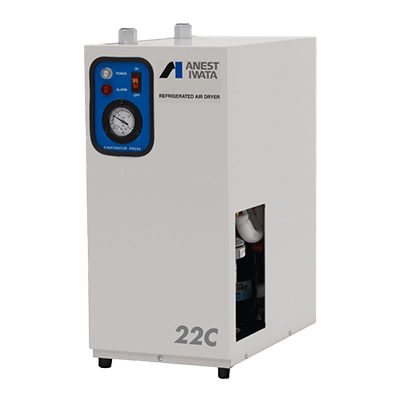What Is a Dehumidifier?

A dehumidifier is designed to extract moisture from the air. Some models are also capable of removing impurities, dust, and oil, and are often used alongside air conditioning systems. Dehumidifiers are prevalent in various environments, including factories, server rooms, and vehicles.
Uses of Dehumidifier
Dehumidifiers play a crucial role in server rooms of data centers, where managing humidity is vital to prevent corrosion and static electricity-induced electronic failures. In the automotive industry, they are integral to air control systems, ensuring moisture and oil do not compromise components like air brakes.
Principle of Dehumidifier
Dehumidifiers employ a heat exchange process to induce moisture condensation and remove it from the air. Similar to air conditioners, they cool moisture-laden air, causing the moisture to condense. This condensed moisture is then reheated and expelled, effectively drying the air. Additional filters are incorporated when removing impurities, dust, and oil is necessary.
Types of Dehumidifiers
Dehumidifiers utilize various methods to extract moisture, impurities, dust, and oil from the air, including:
1. Refrigeration
This method includes air-cooled and water-cooled methods.
Air-Cooled
The air-cooled variant expels heat generated during the drying process through a fan motor. However, improper heat dissipation can elevate indoor temperatures, affecting performance. Hence, installation location and heat dissipation strategies are crucial considerations.
Water-Cooled
The water-cooled variant uses refrigerants for heat dissipation, negating the need to release heat externally and avoiding temperature increases in the room. While more efficient, this type may require additional equipment like cooling towers for circulating cooling water.
2. Adsorption
Adsorption dehumidifiers utilize desiccants to absorb moisture. They are environmentally friendly, avoiding the use of gases like Freon, and are not subject to stringent handling regulations. These dehumidifiers periodically dry the moisture-laden desiccant using previously used compressed air, reducing the need for heater operation and enhancing energy efficiency.
3. Membrane
Membrane dehumidifiers use high-molecular-weight hollow fiber membranes. Moisture-laden air passes through these membranes, selectively removing water vapor and yielding dry air. Like adsorption dehumidifiers, membrane types do not use Freon gases and boast high maintainability.